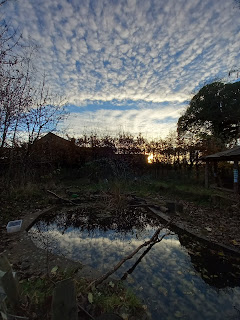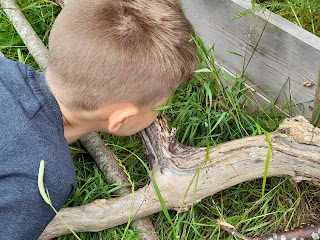Change
Change is one of those words that strikes terror into many a heart. We all know change can be good. We've all experienced change being bad. Change for change's sake is often just frustrating... and is the only guarantee we have in education!
Covid brought change.
We all suddenly had to do things differently, alter our practice, step out of our comfort zones and rearrange our lives. As a school that continued Forest School throughout the last 18 months, there was a lot to navigate to ensure we could provide meaningful sessions safely, and in our case, we extended Forest School to encompass all children weekly instead of weaving it into the curriculum on and off throughout the year.
This was very successful in helping to keep a balance of wellbeing in these ongoing crazy times! It was also a crash course for all-year groups on what Forest School could be. Adults started to see how to use it to enhance what goes on inside, and the pupils began to understand responsibility and independence.
As we pretend everything is back to normal (as per UK Government guidelines) things are changing again. Instead of shorter sessions for ALL classes, we have gone back to 2hr sessions and targeted half the school. One of each of our two-form-entry year groups will do Forest School this term, with their partner classes doing it next term. This switching will continue all year. This allows more time per class but still ensures all children will get at least 3x6 weeks of sessions across the seasons of a year.
This timetable has also freed me up to maintain and develop some neglected areas. We have 3 potential sites for Basecamp, actually, we have at least 5 good spaces but these 3 have seating already. Our site is very easy to access despite not being public land, and a good look around has proved I will be very busy trying to sort out the disruption caused by people wrecking the areas. Mostly it seems to be untidy, but there are several days worth of rolling logs, fixing fences, and hunting down scattered resources.
Sadly I know some of this comes from classes using the space for outdoor learning. Taking classes outside is something I always have and always will encourage. The mess that is currently out there is why I am loathed to develop the area further. Somehow, it seems to be my responsibility to tidy up after a class has used an area. Well, even if not consciously mine, then definitely someone else's - not the remit of whoever made it!
Whatever the activity undertaken is just left there, tidy-up time is not factored into time management. Although leaving all the art equipment out across the desks in class for a week because it'll be art again next week wouldn't be considered, walking away from a circle of logs that have been scattered, from structures built with sticks and bricks, and dens, where all the pots & pans and digging tools have been squirreled away, is apparently acceptable. The knock-on effect of an area that looks like a junkyard is the attitude of the class about to use said junkyard if it looks like an unloved tip therefore there is no reason to respect the space. So when the uninvited visitors turn up out of areas they too see a mess and therefore join in creating a bigger one!
Of course, this escalates. It's not one visit that takes an orderly site with designated areas and leaves it with broken equipment, dumped items, and scattered resources. This is a build-up over time, with staff and children arriving to a mess and assuming that is an OK state to leave it in!
This means that a lot of my PPA time will now be spent trying to bring areas back into a state fit for purpose.
Forest School has a lot to offer schools. It supports learning attitudes, increases attendance, helps wellbeing and mental health and broadens the curriculum. Outdoor learning does much the same, offering memorable, and therefore valuable experiences that enhance learning, but the outdoor spaces must be treated in the same way as those indoors. If basecamp is to be used as a classroom, with a task, an activity, and a learning intention, then it must be treated like a classroom!
Some of my time will be focused on developing a story trail for outdoor learning.
Three paths will lead to a storytelling circle that classes can use to support literacy. The paths will have prompts created by the children, models, words, letters, characters, etc, to inspire or ignore in the tale you weave while walking through. I have mixed feelings about creating this, as while strangers and classes continue to neglect and destroy parts of our site it does feel vaguely pointless...
It is, like all we do, a long-term plan, so hopefully, there is time to address how we as a school use areas outside of the classroom and find a way to manage trespassers.
Meanwhile, many of the children are eager to help tidy and repair - Year 3 were very enthusiastic and mortified that someone had caused damage in the first place, and as much as I like their help and appreciate that they want to take some responsibility for their environment, I don't want them to have to tidy up after other people! And I'd like their input be supporting evolvement of the site and improving their activities rather than clearing up !
Many Forest Schools that are not attached to schools have a continual battle with people on site, especially if they use public land! It can take up a ridiculous amount of time readying a site to be safe and attractive for exploring. Removing discarded bottles and rubbish is annoying, replenishing broken items and fixing spaces that have been vandalised is infuriating!
So here we go, things have to change. A 'responsibility' drive! Pupils are going to find a push to 'leave it as you found it' from Forest School. The older children are a little exasperated at the time it takes (trick is to tidy as you go!) and the younger ones are gung ho for tidying!
I'll let you know how it goes!







Comments
Post a Comment